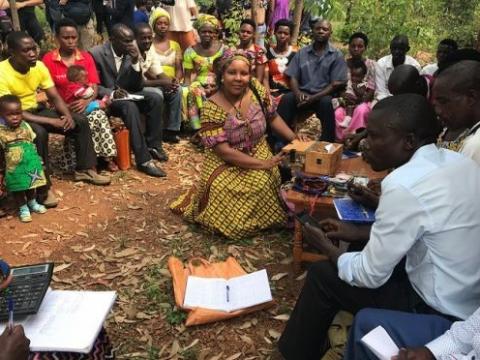Ending child marriage: Drawing inspiration from good practice

By Angeline Munzara, Senior External Engagement Advisor, World Vision International
Poverty and empowerment are about choices. Women’s empowerment is about being able to make life choices and household decisions that addresses the poverty affecting their children; choosing to send their daughters to school. For girls, being empowered means being able to pursue a career of their choice without any risk of being exposed to child marriage.
Girls who grow up in poverty, with limited education, are at the greatest risk of both child marriage and adolescent pregnancy. As families struggle to meet their basic needs, daughters are kicked out of school and married off as a strategy for economic survival for parents. This is not a rare occurrence; child marriage rates are as high as 50 per cent in Malawi, adolescent pregnancy rates are as high as 40 per cent in Mozambique, and 21 per cent in Zimbabwe.
Aguet was 15 when she was married to a 75-year-old man in Malawi.
I resisted the marriage. They threatened me. They said, ‘If you want your siblings to be taken care of, you will marry this man.’ I said he is too old for me. They said, ‘You will marry this old man whether you like it or not because he has given us something to eat.’
Having grown up in a Zimbabwean village where my mother struggled to feed my siblings and I, I firmly believe that child-sensitive social protection programmes aimed at addressing the root causes of child poverty are vital in the life of every child. Receiving food assistance alone was not enough for me as I still needed school fees and uniforms. As a teenager, I needed sanitary pads to be able to go to school and comfortably interact with other kids. All these basic needs cost money.

As I reflected on these real-life stories, I began to ask myself what the role of social protection and women’s economic empowerment is in reducing inequalities and exposure of girls to early marriages? What can all of us do better to achieve the objectives of the Beijing Declaration and Platform for Action (1995)1?
I came to the conclusion that change is possible. We need to draw inspiration from good practices. Speaking recently, UN Secretary General António Guterres inspired us with new energy to pursue gender equality. He said:
We will not be pushed back, we will keep pushing back the push backs until we see change.
An end to child marriages and gender-based violence resulting from extreme poverty is possible by 2030. Through my work at World Vision, I have seen how different livelihoods programmes have increased women’s confidence and enabled them to meet their children’s basic needs.
For example:
-
In Myanmar, this village is challenging gender stereotypes through savings groups. In Sierra Leone, this has instilled confidence of women in both household and political decision-making spaces.
-
A 26 year-old mother from Bangladesh is now able to meet the basic needs of her children through World Vision’s ultra-poor graduation programme. She now has a home to stay, savings in a bank, and assets.
-
A mother in Chad is now self-reliant not only for today, but has self-reliance for tomorrow through livelihoods integrated programming.
-
Microfinance empowered Mariamu Baka in Tanzania who took on the challenge of economically sustaining her family.
As we prepare to next year review of the Beijing Declaration and Platform for Action (1995), we are calling for increased investments in gender-sensitive social protection and women’s economic empowerment programmes.
This means that as part of our work with families we should include consumption stipends and productive asset transfers as a strategy to “distract” them from sending off children into early marriage. Women with increased access to financial resources (savings and microfinance) and control over productive assets (such as land) have more positive coping strategies to meet the basic needs of their children. We have also seen the importance of men’s engagement to promoting women economic empowerment. It is possible for men and women to work together for their children. Finally, creating child poverty reduction plans and policies with implementation accountability plans is central to reducing violence against women and children.
By doing all this and much more, I believe we will indeed keep pushing back until we see change.